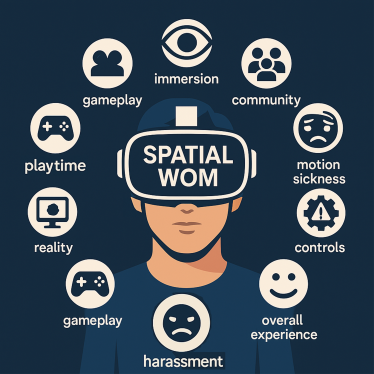Introducing Spatial Word of Mouth: New Article Co-authored by MCM Prof. Hennig-Thurau on Electronic WOM for the Metaverse Age

In a new article published in the Journal of Retailing (rated “A” by VHB), Professor Thorsten Hennig-Thurau from the Chair of Marketing & Media together with former MCM professor Raoul Kübler (now ESSEC Business School, France) investigate how users of the metaverse communicate with and in immersive digital environments. In their article, they introduce the concept of Spatial Word of Mouth (WOM) as an extension and 3D evolution of traditional electronic WOM alias eWOM for the metaverse age.
By examining 300,000+ reviews from 153 Virtual Reality apps, the scholars identify 10 key topics, four of which they find to be unique to immersive environments, based on a comparison data set of more than 1.5 million customer reviews of 2D apps: immersion, community, playtime, and motion sickness. Immersion and social interaction emerged as critical drivers of both user satisfaction with an app (“Spatial WOM valence”) and app adoption (proxied by Spatial WOM volume). Technical issues and controls also play a significant role, reflecting the nascent state of VR technology.
For brands and developers, these insights offer actionable guidance: prioritizing intuitive design, fostering communities, and mitigating motion sickness can enhance user experiences. This work bridges a gap in understanding how consumers communicate in spatial environments—a growing priority as the metaverse evolves.
Read the full paper here (it is open access, thanks to the University of Münster waiving the corresponding fees)
For a longer backstory of Professor Hennig-Thurau’s work on the topic of eWOM, check out the this link

